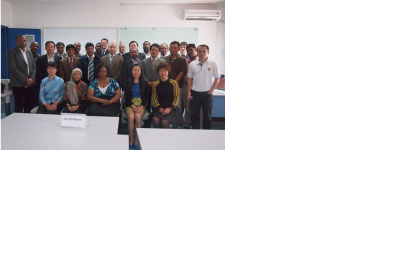Back to back with its United Nations International Conference on Space-based Technologies for Disaster Management "Multi-hazard Disaster Risk Assessment" in Beijing, the UN-SPIDER Beijing Office offered an international training course on Drought Monitoring and Assessment Using Space Technology from 18 to 22 September, 2014. The participants included experts from Member States with which UN-SPIDER has previously cooperated.
The training was organized jointly with the National Disaster Reduction Centre of China (NDRCC). A total of 22 participants from 17 countries from Asia and the Pacific as well as from Africa attended the training programme.
The training programme included theory lectures and hands-on exercises taught by experts from UN-SPIDER, NDRCC, and Beijing Normal University (BNU). The topics included:
- concepts of remote sensing for drought monitoring,
- an introduction to spatial data access and software,
- principles and methods of vegetation information extraction related to drought,
- principles and methods of water information extraction related to drought,
- drought monitoring based on multi-data sources,
- theory and application of Integrated Surface Drought Index (ISDI),
- principals and methods of space technology for drought risk assessment, and
- rapid mapping for drought monitoring and risk assessment.
After the five-day training, the participants were fully conversant with the concept of disaster risk management and drought assessment, and able to understand multi-drought feature parameters and the extraction method, as well as the methodology of drought risk assessment using space technology. The interaction between the experts and participants also fostered networking and the exchange of knowledge and new research frontiers in drought risk assessment.

